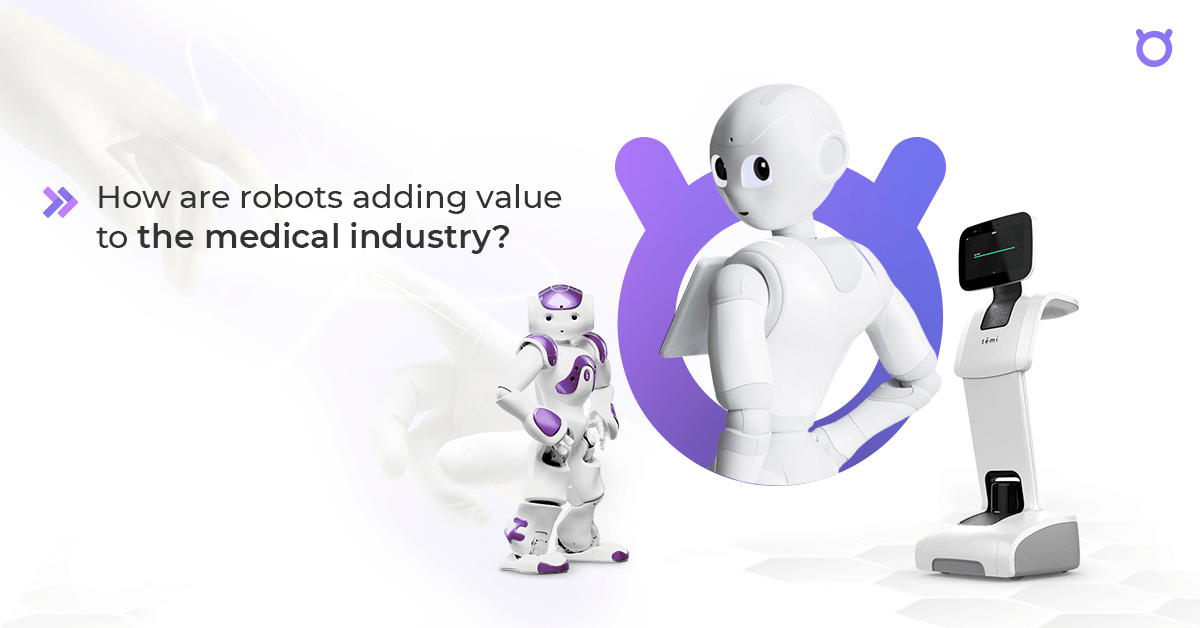A global shift in economic power and the migration of business activities from western nations to emerging markets affect the healthcare industry as it did to other sectors. Innovations at the local or international level let consumers control their own healthcare. Growing global competition has further spurred the growth of new health economies, where AI and robotics are no longer limited to science fiction. The medical industry is undergoing a significant change as robots increasingly perform human tasks more efficiently and quickly while becoming a part of our healthcare ecosystem. In this fact-driven article, we will discuss how robots are changing healthcare by adding value to the industry. Read on!
Medical robots are in demand.
An industry report from Market Data Forecast estimates that the Middle East and Africa will have a market worth of 1.88 billion medical robots by 2026, up from 0.7 billion in 2022, growing at a CAGR of 21.95%. Medical robots are expected to grow exponentially in Saudi Arabia owing to the rising elderly population in the region. The UAE is also likely to experience significant growth due to the increasing use of surgical robots across various fields.
A key reason for the growth of robotic machines in the Middle East is that governments across the region in recent years have made healthcare a key focus area in light of the economic and demographic transformations. The market has gained momentum from recent investments to upgrade hospitals and clinics with advanced technologies, driving the demand for medical robots.
Benefits: How are robots adding value in healthcare?
Pepper and NAO are potent tools for spreading healthcare awareness and seen as crucial touchpoints for providing a unique and optimized patient experience for better disease management. Thanks to their remote-monitoring capability, robotics in healthcare can empower patients to access higher-value and more comprehensive care. Additionally, a patient’s functional ability & intrinsic capacity can be enhanced with NAO & Pepper.
Improve operational efficiency
Pepper and NAO can perform human tasks with greater precision and enhance the efficiency of the administrative process. Pepper is also effective in queue management at the time of registration in hospitals and clinics. By improving the quality and consistency of patient experience, robots have become an appealing choice for many hospitals as receptionists. Recently, two Belgian hospitals hired humanoid robot Pepper to take on the role of a receptionist. Pepper can recognize human voices in 20 languages and offer seamless guidance to hospital visitors who want to see their loved ones.
Better diagnosis and faster decision making
Robots can store far more medical information and generate real-world evidence to analyze a patient’s life history to diagnose a condition and support clinical decision-making. Robotics is also beginning to impact healthcare by identifying patients at risk of developing a disease or seeing it deteriorate due to lifestyle, environmental, genomic, or other factors.
Utilize resources efficiently
Pepper can be used to optimize human resource allocation for repetitive and mundane tasks. Besides, one of the major advantages of robots in hospitals is that they can work tirelessly without the fear of getting infected and can be programmed to perform any tasks when there is a shortage of medical staff. Pepper and NAO provided relentless assistance during COVID-19 and helped the hospital authorities mitigate the troublesome situation in the best possible way. Prior to the outbreak of COVID-19, a Czech hospital deployed Pepper in the children’s ward, but it was moved to other departments due to health emergencies caused by the virus and the acute lack of medical personnel.
Enhance elderly care standards
Humanoid robots have become a significant aid to the elderly due to their interactive and intelligent interface, allowing them to meet their individual needs. In addition to providing detailed and straightforward instructions for activities such as exercise, Pepper enables medical professionals to process and share medical results, therefore, effectively monitoring the health of the elderly. Pepper’s telepresence feature allows the elderly to maintain contact with their families and friends. By providing help for the elderly, Pepper does more in less time and embraces new ventures every day.
Spreading awareness
Medical robots have been very effective in spreading awareness, especially during COVID-19. To combat the virus, masks and social distancing are essential. Pepper is deployed at one of the renowned hospitals called Hořovice Hospital in Czech Republic to promote social distancing among patients and staff.
Robots in medicine will continue to evolve with advances in machine learning, data analytics, computer vision, and other technologies. All robots will develop to complete tasks efficiently, accurately, and autonomously, allowing their human counterparts to concentrate more on complex jobs. According to some projections, the global market for healthcare robotics will reach 11.44 billion by 2025. All signs point toward it being another industry that will thrive by leveraging technologies that are advanced enough to allow broader experimentation and adoption.
Drop us a line
Error: Contact form not found.




